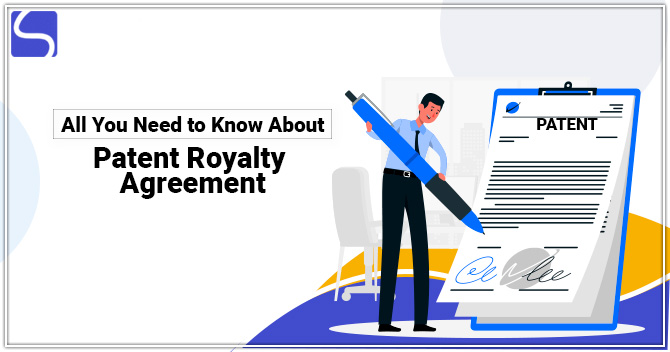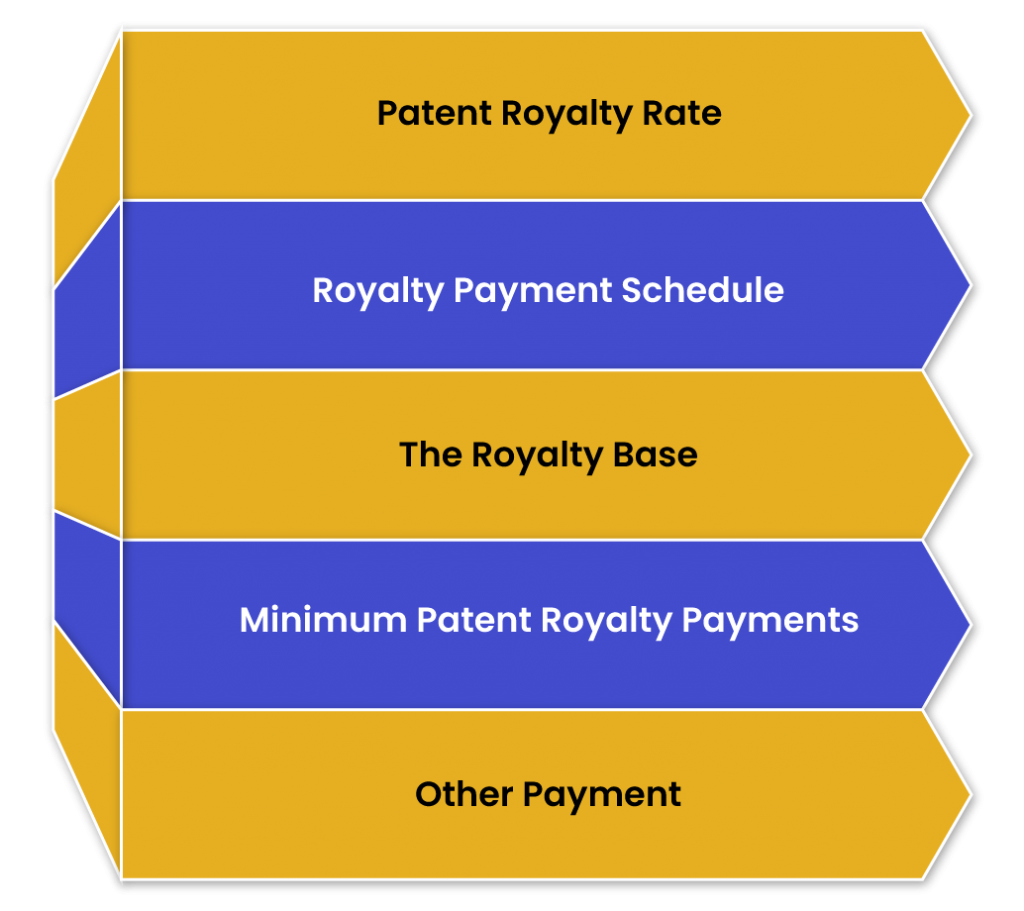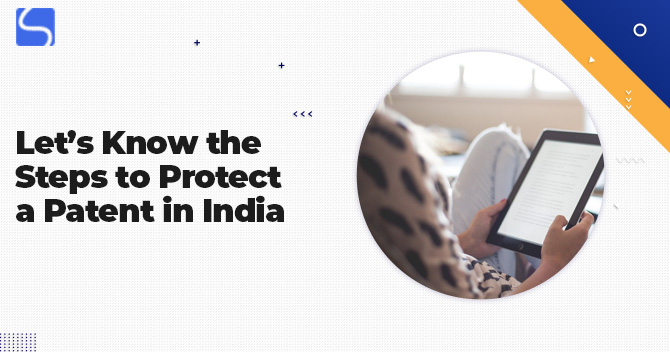All You Need to Know About Patent Royalty Agreement

Karan Singh | Updated: Sep 16, 2021 | Category: Patent
A Patent Royalty Agreement is an agreement that outlines the terms in which a licensee can use a patent product of a licensor. This agreement is used when a licensor licenses the rights to the invention (in full or in part). This agreement states what is being licensed, for example, a patented product or technique, how the licensee can use it (to sell, use, or manufacture the product), and for how long & in what conditions they can use it. It also verifies the licensee’s remuneration in exchange for its use, and this is generally royalties’ states as a sales percentage. Scroll down to check more information about Patent Royalty Agreement.
Table of Contents
Essential Details in a Patent Royalty Agreement
Following are some essential details that should be included in the agreement:
- A description of the licensee & licensor’s activities;
- Information of the license’s exclusivity;
- The duration & level of the Patents;
- Name of the licensee & licensor;
- The remuneration of the licensee must pay in exchange for the Patent use (including royalty base, royalty rate, payment schedule, and other payments);
- What exactly is being licensed, for example, a license to use, make, and apply company A’s patented block construction system technology for assembling power plants);
- Any limitations on the use of the license;
- The geographical range of the license;
- Date & duration of the Patent Agreement.
What are the Types of Parties Involved in the Patent Royalty Agreement?
Following are the two different types of parties involved in the Patent Royalty Agreement:
- Licensee: A group of people or an individual it can be a company or companies also to whom the licensor will give the exclusive right to use the Patent for offering goods or services in exchange for royalty;
- Licensor: A group of people or an individual it can be a company as well who have the ownership rights of Patent over the invention.
Specifying Royalties in a Patent License Agreement
The most vital part of any Patent License is the compensation part. Both parties can agree that the licensee pays the licensor Patent Royalties for the use of their patented product. This agreement must define the following:

- Patent Royalty Rate: This is generally agreed as a sales percentage.
- Royalty Payment Schedule: Will the royalties be paid monthly, quarterly, yearly or as per some other schedule fixed mutually between the parties.
- The Royalty Base: It generally includes net or gross revenue or sales.
- Minimum Patent Royalty Payments: For protecting the licensor’s right and their Patent, an amount is fixed which the licensor must pay each year or monthly, despite generated profits, sales, etc.
- Other Payment: When licensee pays a direct fee on top of the regular royalties or share from any other advantage released by the licensee by manufacturing, using or selling the patented product.
Benefits of Drafting Patent Royalty Agreement
- Transferring the risk involved in designing & manufacturing the products to the licensee outreaching towards international markets;
- Exclusive Patent Rights remain integral due to limited period agreement and capable of using the clientele of big cooperation by assigning them rights.
Vital Points to Remember Before Drafting a Patent Royalty Agreement
- At the time of drafting an agreement, one must make sure to import all the vital clauses and revise the agreement or contract as much as possible to avoid lengthy statutory consequences in the future in case of any violation of argument between the parties.
- For ensuring this, one should confirm that all the requirements, if any, documents & procedures have been completed and ready before drafting the Patent Royalty Agreement. E.g., Patent Specification, checking the capability of licensee and licensor both, etc.
- After ensuring that all the statutory procedures and documents required before agreeing to come into a Patent Royalty Agreement, one should make sure exhaustively that all the common and specific clauses (if any) are laid out in the agreement, which would confirm that no confusion in the future and rapid dispute resolution between the parties. Due Diligence must be executed by both parties in this agreement.
What happens if a Patent License is violated?
Sometimes, a licensee may violate the Patent Royalty Agreement. For instance, they might go against the restrictions of the license or conduct activities outside the agreed ground of use. Patents can also be violated outside of license agreements. This happens when a person or organisation uses or exploits the patented product without the inventor permission. This is known as infringement[1] and usually results in court proceedings & compensation. In the United States, reasonable royalties are often used as compensation in violation cases.
Patent Royalty Agreement Sample
This Patent Agreement is made on <date and day> day of <month> of <year> in<place>.
BETWEEN
<Name of Individual or Licensor Company> a company registered in <Place of Registration> under <Law or Act under which registered> bearing number <Company Registration Number> whose register office is at <office address> (hereinafter referred to as “Licensor”)
AND
<Name of the individual or licensee company> a company registered in <country of registration> under <law/act under which registered> bearing number <Registration Number of Company> whose registered office is at <Address of the Office> (hereinafter referred to as “Licensee”>
Licensee & Licensor jointly referred to as the Parties or individually as Party.
WHEREAS:
- The licensor has prepared and is the beneficial owner of the considerable body of valuable Technical Information as defined relating to the assembly, manufacture, and commercial operation of the Products and is the useful owner of Patent Rights relating thereto as outlined below. The licensor is the one & only exclusive owner of and has the exclusive right to grant licenses under Letters Patent of <Country Name> issued to it particularly < Number> allowed<Patent Name> and < Number>, entitled.
- No agreement in disagreement with this agreement has been entered by the licensor, and the licensor has not permitted any other individual, company, or firm any right, shop-right license, or privilege granted under Patent Royalty Agreement.
- The licensee wants to receive, and the licensor is willing to issue a license on the terms & conditions layout in this agreement to use such details and work under the set Rights of Patent to use, sell, manufacture, or otherwise deal in the products.
Conclusion
All the clauses mentioned in the Patent Royalty Agreement must be legitimate & statutorily legal. It should be remembered that every contract or agreement is not similar not just because of different party names but also because of various inventions, restrictions, duration, processes, products, procedures, nature of contract or royalty rates, etc. Hence, the contract should be drafted very precisely and cautiously as it lay down the foundation for future relations between the contracting parties.
Read our article:All You Need to Know About Patent Valuation














